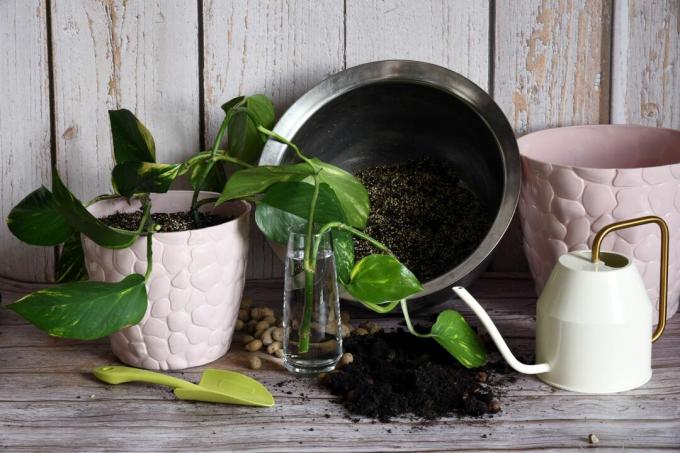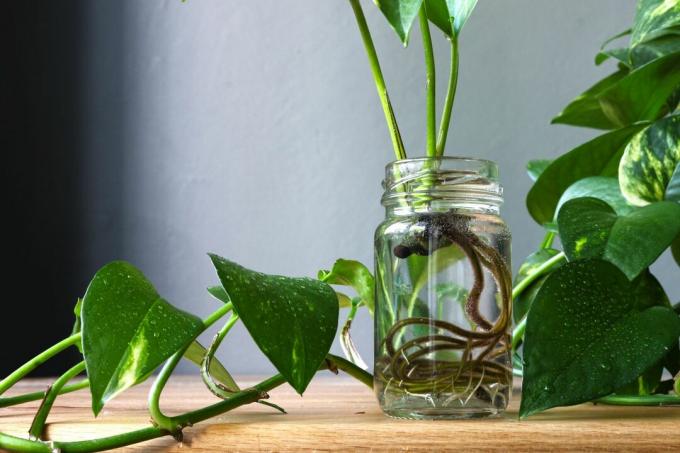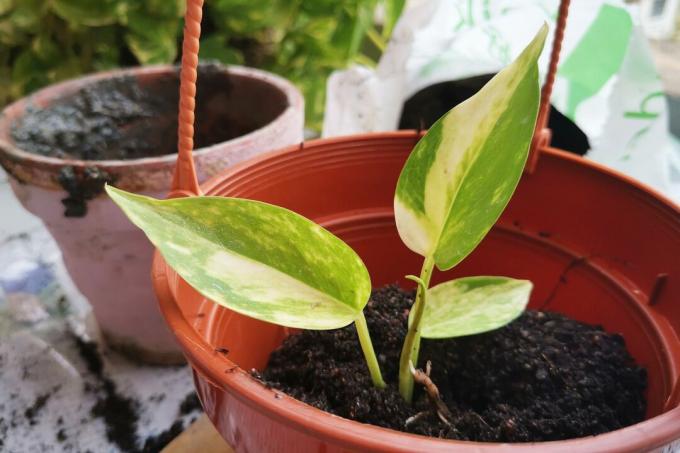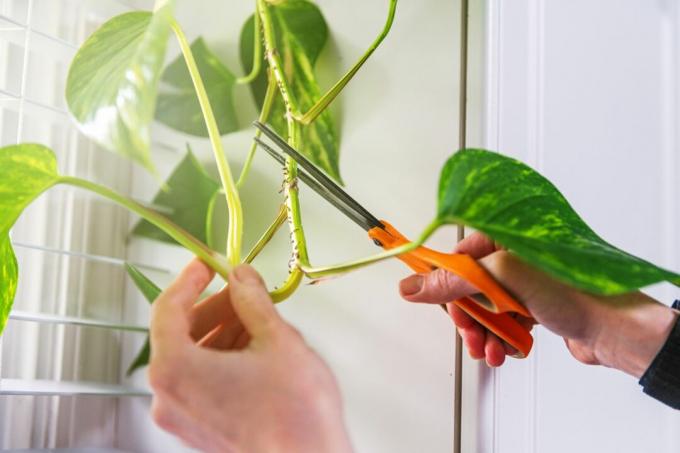If you want to increase your ivy, you have various options. We explain how the propagation of ivy succeeds through offshoots and cuttings.

ivy (Epipremnum) are easy to care for and, if cared for properly, will twine throughout the room. If you would like to have more specimens of this decorative plant or want to give away small ivy plants, then it is time to propagate your ivy plants. Luckily, this is very easy to do and is not only cheaper but also more sustainable than buying new plants. In this article we give you instructions and tips for the propagation of ivy by offshoots and cuttings - propagation using these methods is almost always successful. Using ivy seeds, on the other hand, is not recommended, precisely because the plant does not flower or fruit at all in our latitudes. With both methods, make sure that you only take plant parts from a vital and healthy mother plant.
contents
- Should you propagate ivy in water or in soil?
- Propagate ivy by offshoots
- Propagate ivy by cuttings
Should you propagate ivy in water or in soil?
To increase the ivy, you can use water or soil. Which medium you want to use is of course up to you. An advantage of propagating in water, for example, is that you can see directly whether the ivy has already formed roots. The water should be changed every two days with this method. Once the roots are two to three inches long, it's time to plant.

Propagate ivy by offshoots
Efeutute can be easily and effectively propagated by offshoots. To do this, select a healthy shoot with aerial roots. Then lower the aerial roots into the substrate in the pot of the mother plant. Use a piece of wire to secure the scion of the ivy in the ground. Now keep the offshoot sufficiently moist, but not too wet. As soon as the Efeutute offshoot has formed leaves, you can separate the young plant from the mother plant and put it into its own pot.
Important: Since all parts of the plant Ivy poisonous be sure to wear gloves when working. Also, do not leave cuttings or other pieces of the plant lying around where children or animals can reach them.
Summary of multiplying Efeutute by offshoots:
- Select a healthy shoot from the mother plant
- Lower the aerial roots of the shoot into the substrate
- Fix shoot with wire in the substrate
- Keep cuttings sufficiently moist
- Repot as soon as new leaves have formed

Tip: Pull out several young plants at the same time and plant them together in a pot, because the ivy rarely branches out. If you plant several young plants together, they give a nice, dense overall picture.
Propagate ivy by cuttings
An even easier way to multiply all Efeutute species is the propagation by cuttings. The ideal time for this is in the spring, when the days are getting longer and warmer again and the ivy cuttings find optimal growth conditions. But you can also take cuttings all year round. Use a sharp knife for this and look for a shoot that has ideally already formed aerial roots. Now you can cut the shoot into sections of 8 to 15 cm. Make sure that each section has at least three leaf nodes. The cuttings should still have one or two leaves and are now placed individually in pots with growing substrate or in a glass of water. Our Plantura Organic Herb & Seed Soil is, for example, precisely tailored to the cultivation of young plants. The organic soil is peat-free and intentionally contains fewer nutrients to encourage the small plants to develop roots.
Now bring your cuttings to a light and warm place. Temperatures of around 20 °C are optimal for the small ivy to develop well. Plastic bags are now placed over the pots. The bags act like a mini greenhouse and ensure a suitable microclimate with sufficient humidity for the plants. Now the cuttings must be regularly supplied with water. Keep them moist but not wet. Airing the bags once a day ensures that no mold forms. Alternatively, the ivy can be sprayed with water several times a day.
Summary Propagating ivy by cuttings:
- Take cuttings with three leaf nodes and at least one leaf
- Place cuttings individually in the substrate
- Put a plastic bag over the pots
- Set up bright and warm (20 °C).
- Always keep the substrate moist but not wet
- Ensure sufficiently high humidity

Once the cuttings have established ample roots and develop leaves, it's time to transplant them into a larger pot and richer soil.
You can now water, cut and fertilize the propagated ivy in the same way as your adult specimens. Here you can find out all about it Maintaining the ivy.
